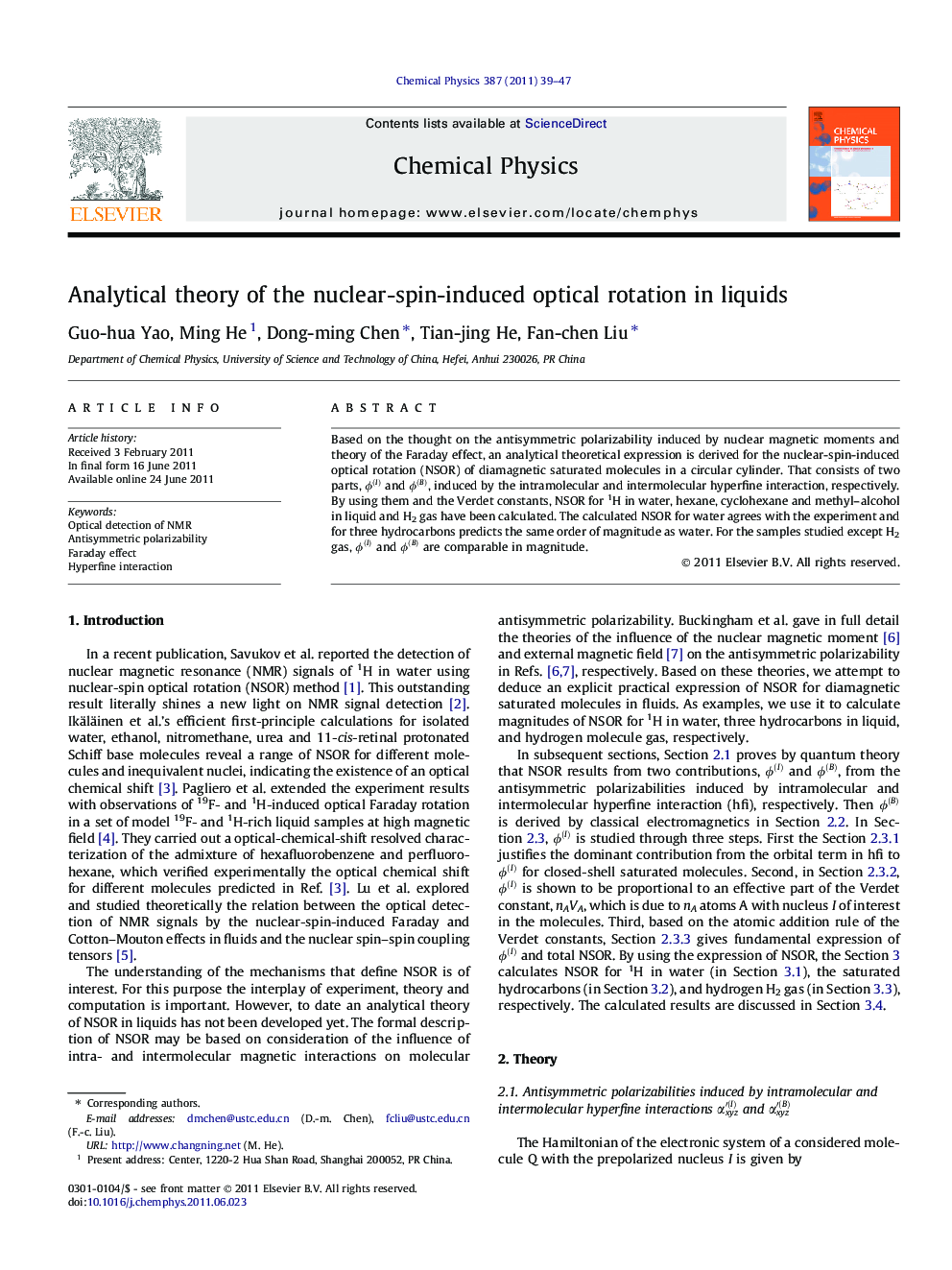| Article ID | Journal | Published Year | Pages | File Type |
|---|---|---|---|---|
| 5374727 | Chemical Physics | 2011 | 9 Pages |
Based on the thought on the antisymmetric polarizability induced by nuclear magnetic moments and theory of the Faraday effect, an analytical theoretical expression is derived for the nuclear-spin-induced optical rotation (NSOR) of diamagnetic saturated molecules in a circular cylinder. That consists of two parts, Ï(I) and Ï(B), induced by the intramolecular and intermolecular hyperfine interaction, respectively. By using them and the Verdet constants, NSOR for 1H in water, hexane, cyclohexane and methyl-alcohol in liquid and H2 gas have been calculated. The calculated NSOR for water agrees with the experiment and for three hydrocarbons predicts the same order of magnitude as water. For the samples studied except H2 gas, Ï(I) and Ï(B) are comparable in magnitude.
Graphical abstractThe nuclear-spin-induced optical rotation (NSOR) in liquids is attributed to the influence from the intra- and intermolecular hyperfine interaction on molecular antisymmetric polarizability.Download full-size imageHighlights⺠Derive theoretical expression for nuclear spin optical rotation (NSOR) in fluids. ⺠Calculated results for water agree with the experiment. ⺠Predict magnitudes of NSOR for 1H in three liquid hydrocarbons. ⺠Infer the ratio of intra-/inter-molecular induced antisymmetric polarizabilities.
